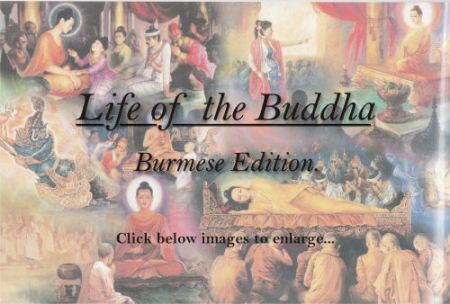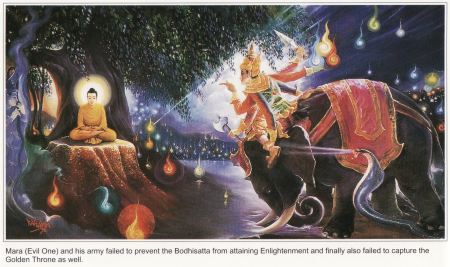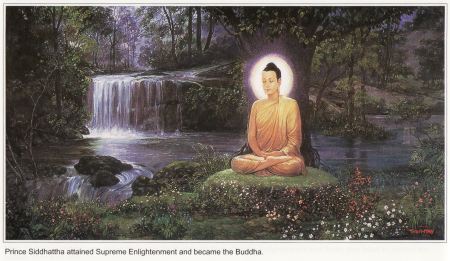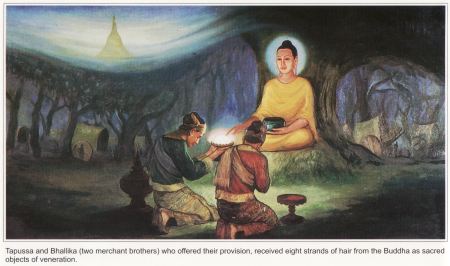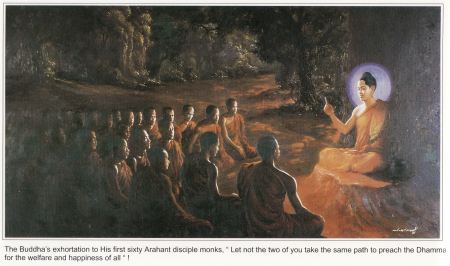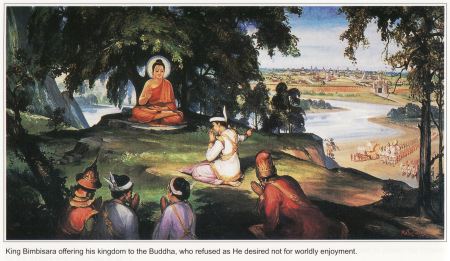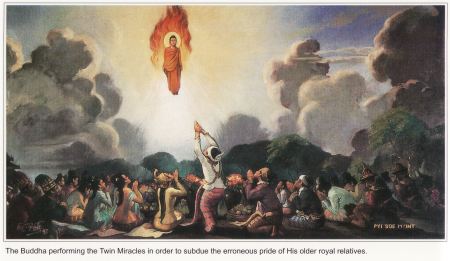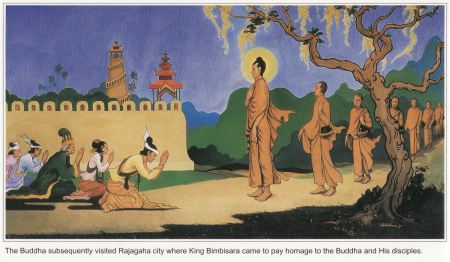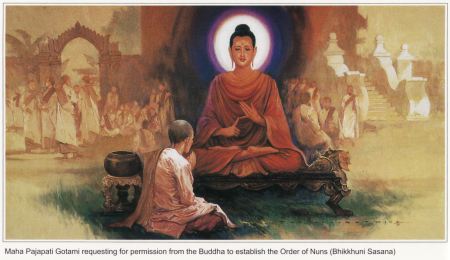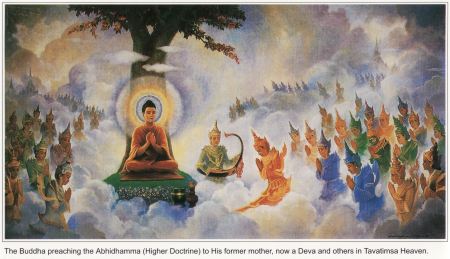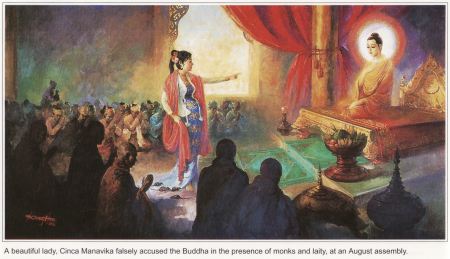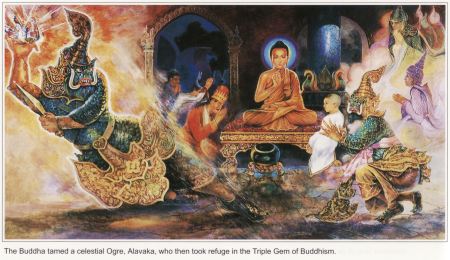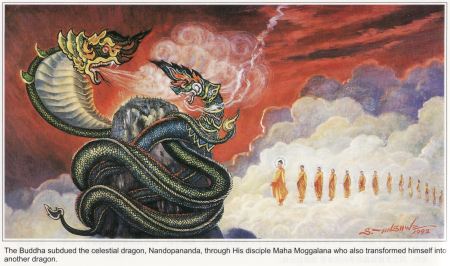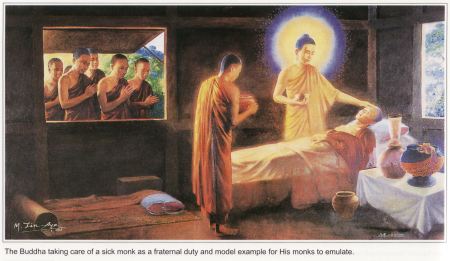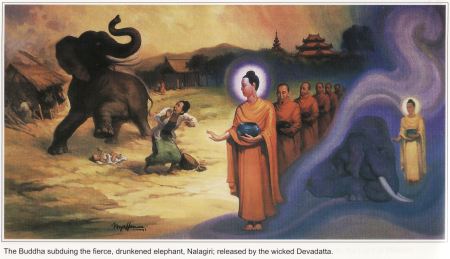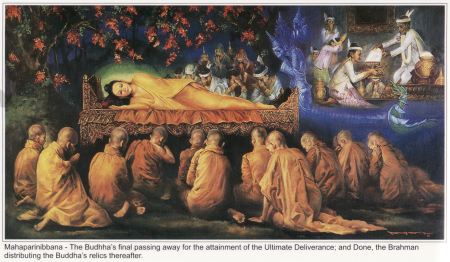by Gina Lake
One of the most powerful things you can do to improve any relationship and to increase the amount of happiness you feel is to not get involved with your judgments. Be aware of judgmental thoughts (notice them when they arise in your mind), accept that they are there (don't think they shouldn't be there), and then choose to not dwell on them or give voice to them. Judgments are probably the one thing that interferes most with love and sustaining relationships. Judgments and the criticism that flows from them kill love. Even small doses of criticism when engaged in day in and day out can poison a relationship. They kill the love that is there and leave anger, resentment, and hurt in its place. So the very first principle for a more loving relationship is to ignore your judgments and don't express the criticism that is the natural result of judgment.
There are a several reasons why judgments are difficult to ignore. First of all, because they arise in our mind, we assume our judgments are true and meaningful representations of "our truth," while judgments actually come from a small, petty, and unwise part of ourselves: our conditioned self, or ego. Judgments never reflect our true nature, our essential self, or what I like to call Essence. We assume our judgments serve a purpose, but they don't achieve what we hope they will achieve, which is changing someone or something. People rarely change because they are judged, and if they do, that change comes at the expense of love and trust. Judgments are a way of bullying our partner to change in ways we want him or her to change, and that is not a loving act.
If love and relationship are important to you, which they must be, since you are reading this, love and relationship have to become more important than having your way, more important than your conditioning and how you like things done. The way you put love first is to refuse to get involved in the judgments that pop into your mind and, above all, don't speak them. The reason to not get involved with your judgments mentally is that doing so leads to believing them and speaking them. The more you dwell on a judgment, the more real and true it seems. Judgments cause us to feel bad about someone (and bad about ourselves), so we naturally want to do something to change that person so that we no longer have to feel bad.
There is a better and more effective way to feeling good, and that is to realize that you don't have to change anything or anyone except your relationship to your own thoughts. All that has to change is your relationship to the judgments that arise in your mind. You can believe them and try to change the world to fit them, or you can see the truth about them, which is that they have no intrinsic value or truth. If a judgment arises, notice it, recognize it as a judgment and as therefore not worth your attention, and then leave it alone. Put your attention on something else, like something you appreciate about your partner, or about anything else.
Another reason judgments are hard to ignore is that they give us a sense of being right and being better than or superior to another. This superiority and self-righteousness feels good to the ego. That is the payoff for judging and one reason we judge and continue to do so even when we see that judging and criticizing is not getting us what we want from the other person, including that person's love. When we choose to judge someone, we settle for this feeling of superiority and self-righteousness instead of love and the good feelings that come from being loving, kind, accepting, and understanding.
We tend to make this choice instead of being loving because it is our default position as human beings; it is the path of least resistance. We are programmed to not make the most loving choice, oddly enough. So to get what we all really want, which is to be loving and to be loved, we have to learn to overcome some of the negative programming we have that keeps us making choices that are destructive to our relationships.
A big reason we don't ignore judgments is that most of us are not that aware of what is going on in our mind. We tend to accept the thoughts that go through our mind and act on them or speak them without questioning them first. We don't tend to ask ourselves if what we're thinking is true or useful. We often don't question what the result will be if we believe our thoughts and act on or give voice to them. The trouble with this is that our thoughts are often unkind and untrue, and responding to them without evaluating them first results in a lot of trouble and pain to ourselves and others. Becoming more loving is largely a matter of becoming more conscious of what we are thinking, and then choosing a more loving response than the automatic one, which is likely to be the ego's response.
The ego is a primitive aspect of ourselves that is shortsighted and out for itself. It doesn't see the whole picture or value love's very important role in life. It is, in fact, the enemy of love. The ego's point of view as well as our conditioning are reflected in our thoughts about ourselves, others, and life. The ego's voice is the mental commentary we all are so familiar with, which seems at times like our own voice and at other times like someone else speaking to us. This aspect of the mind that chatters on and on is often called the egoic mind, and it reflects the false self, not Essence.
Another thing that makes judgments difficult to ignore is that we assume that judgments and criticism are a perfectly acceptable and valid form of communication, since they are so common. It is part of our culture to judge, to express opinions about anything and everything. It almost seems like it's our duty to judge, as if we are not being discriminating if we don't point out the flaws of something or someone. However, the truth is that pointing out flaws, criticizing, and having an opinion are the easiest things in the world to do. What's difficult is being loving, accepting, and moving beyond our judgments, beliefs, and other conditioned ways of being. That is our challenge as human beings—to become more loving, not to complain, judge, and try to change others to suit our preferences. Loving is a matter of moving beyond our personal preferences and judgments enough to let love flow to another, enough to allow ourselves to see another's beauty, not the flaws.
The truth is that judgments don't just hurt others, they hurt us to have them. When we are feeling judgmental and critical, we feel small, petty, unhappy, angry, and unkind, even though we may enjoy the feeling of being superior or right. Judging and criticizing others leaves us feeling bad about ourselves, and this may drive us to tear others down even more, creating a vicious cycle of negativity. This is not how we want to feel, and it isn't how we want to make others feel; and yet, that is what happens. Our judgments cause us and those we're judging to feel unhappy and unloving. That is the opposite of what we all want!
Notice how you feel the next time you catch yourself judging and criticizing someone, including those you aren't even close to, such as people in the media. Judgment and criticism don't feel good, and you don't have to feel that way. We have the power to choose not to judge and criticize (internally or externally), and when we make that choice, it is possible to get in touch with who we really are—with Essence. Essence is an experience of contentment, peace, joy, happiness, awe, love, gratitude, and wonderment. That is who we really are, and the only thing that can obscure our true nature is believing the ego's negative evaluations and stories about everyone and everything. Change in the world can still happen without our judgments because the wisdom that is our true nature moves us to act wisely and lovingly in the world. Our judgments only interfere with that.
Because judging and criticizing is the path of least resistance, it can take some practice to choose to be loving and accepting over the usual criticisms. But the more you choose love, the easier it becomes to choose it again, and the weaker the habit of criticism becomes. If you fully absorb this first principle, it will change your life. You don't need your judgments. You have never needed your judgments. They have never served you, but only obscured and undermined the love, wisdom, and happiness that are possible. Love and happiness are possible because it is your true nature to love and to experience happiness, peace, and joy.
Practices: To be done throughout the week:
1. Whenever you feel an urge to judge your partner, examine the conditioning (e.g., desires, beliefs, opinions, preferences, fears, expectations, demands) behind that judgment. Every judgment is a disguised "should" or "should not." What "should" or "should not" are you imposing on your partner? Our judgments are an attempt to get our partner to change his or her behavior so that we don't have to feel the discomfort that our own conditioning is causing. When others do things we don't like, that is, when they don't conform to our conditioning, we feel afraid, angry, ashamed, or embarrassed. In an attempt to get rid of these feelings, we try to change our partner by judging or criticizing him or her: "If only he or she would change, I wouldn't feel this way!" Notice how your judgments are an attempt to ease the discomfort that is caused by your own conditioning—not by your partner, but by your desires and demands that your partner be a certain way.
2. If a judgment arises, just let it be there without doing anything about it. What is that like to just let that judgment be there? Your ego won't want you to stay with this exercise. It may try to talk you out of just being with the judgment, or it might offer a more concealed judgment or one that sounds a little nicer. Are there feelings that accompany this judgment? Just let them be here as well without doing anything else with them. The more you practice noticing your judgments and feelings and just letting them be there without doing anything else, the weaker these judgments and feelings will become. What empowers our thoughts and feelings is acting them out. If you don't want to be at the mercy of your negative thoughts (judgments) and feelings, then just let them come and go in your mind without identifying with them or giving voice to them. Don't fight with them or push them away, but allow them the space to come and go, as all thoughts naturally do. Your thoughts c! ome out of nowhere and disappear into nowhere. You have the ability to empower them by giving them your attention or dis-empower them by not giving them your attention, which is accomplished by giving your attention to something else.
Explorations: Do just one of these explorations a day. When you've finished all three explorations, go back to each one and see if you can uncover any further insights.
1. There are certain judgments and criticisms you have about your partner that come up again and again and are probably causing conflict, stress, and a shutting down of love between you. What are they? Take some time to contemplate this. Make a list of them. What if you didn't have these judgments and the feelings that go with them? What would that be like? And what if you never expressed your judgments or criticisms? What would that be like? How would you feel? How would that change your relationship?
2. Look carefully at any resistances you may have to ignoring and not speaking the judgments and criticisms you have. What are you afraid will happen if you give up judging and criticizing? Are you afraid you will be a doormat, you will be unhappy, you will be taken advantage of, you will not be in control, you will lose power in the relationship? Is it your way of being strong? Is it your way of being smart? Is it your way of proving that you are an individual? How do you believe your judgments are serving you? What are you getting out of judging and criticizing? Spend at least ten minutes contemplating this question because it is a very important one. There are reasons, although mistaken ones, for clinging to our judgments and criticisms. Once we really see how ineffective and destructive our judgments are, they lose their power to capture our attention and make us do their bidding.
3. What are the negative ramifications of judging and criticizing? Does your partner fire back with criticisms? Does your partner withdraw, disengage? How does judging and criticizing make you feel about yourself? What is your self-image like when you are criticizing someone? Are you The Bitch, The Complainer, The Whiner, The Martyr, The Wronged One, The Raging Maniac, The Self-Righteous One, The Mother Hen, The Drama Queen, The Emasulator, The Boss, The Avenger, The Victim, or some other image? Our ego takes on these personas, but we are not our ego, and we can choose to not identify with and act out these personas. Our judgments cause negative feelings within ourselves and others—anger, resentment, hatred, desire for revenge, and even guilt and shame—and negative feelings are not only exhausting, but also can lead to physical illness. They shut down our own heart and the hearts of those around us. What price are you paying for your judgments and criticism? What is the cost! to your relationships? Is it worth it?















